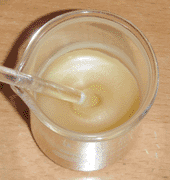
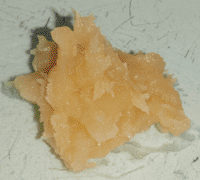
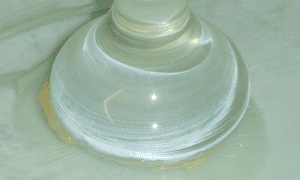
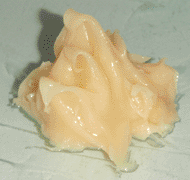
Natural oils (triglycerides of fatty acids) are excellent lubricants, and due to their slightly polar nature they have a strong affinity for metal surfaces; however, any given oil will only be suitable for a narrow temperature range. Drying oils have very low freezing points, but at high temperatures they rapidly absorb oxygen and solidify. Non-drying oils have the opposite problem, in that they are stable to oxidation, but freeze solid in cold weather. Semi-drying oils fall between these two limits, tending to freeze or oxidize depending on the degree of saturation of their fatty acids. This problem can be overcome by careful oil selection depending on the application, but fortunately a less cumbersome option exists. Castor oil (from the castor bean) has a unique fatty acid structure, which gives it both a low freezing point (-20°C) and high oxidative stability. It also has a fairly high viscosity, which provides a thick lubricating film. Furthermore, it is inexpensive and conveniently available locally at most pharmacies. I have found it useful both as a machine lubricant and as a cutting oil, and it has replaced a number of petroleum products which I had previously used for metalworking. However, oils in general are not suited for all lubricating tasks, and for some applications a grease must be used.
A grease is simply an oil that has been made thixotropic; that is, solid at rest, but liquid under pressure. This allows for the lubrication of large exposed components such as gears or screws (where an oil would quickly run or drip away), and for the maintenance-free lubrication of sealed bearings. Typically this is achieved by dissolving a soap into the oil, but this is much easier said than done, and the results are highly variable depending on the process conditions. A simpler alternative is to use a wax instead. Waxes have the property that when dissolved in an oil, they cause the oil to solidify below the melting point of the wax; however, the true solidity of the mixture is determined by the wax content, and with enough oil the mixture can be easily crushed into a paste. If a volatile oil (such as turpentine) is used, the result is paste wax; however, if a non-volatile oil is used in its place, and the paste is crushed to a very fine degree, a thixotropic grease can be made.
To make such a grease, I began with 20 grams of castor oil, into which I melted 5 grams of carnauba wax at around 110°C in a small beaker. I then let the mixture cool, and at approximately 80°C it froze into a pale yellow solid. I then let this cool further to room temperature, at which point I broke up the solid with a stirring rod and transferred it to a piece of plate glass. In this state it was a coarse paste, composed primarily of large chunks. I then used a muller to crush and spread the paste, in a method identical to that of making oil paint. This changed the consistency of the paste tremendously, quickly making it homogeneous and thixotropic, to the point that it could be pulled into strings. The mulling process was also considerably easier than usual, as the grease being formed was extremely slippery. Furthermore, the grease appeared to be resistant to sharp pressure; ordinarily when mulling paint, the edge of the muller will sometimes dig through and scuff the glass underneath, but this could only be achieved intentionally and with difficulty when mulling the grease. When the mulling was complete, the resulting grease could be spread easily, but would also hold its shape without flowing, and in general seemed identical to commercial lubricating greases in appearance and behavior. The steps of this process can all be seen at the top of the page.
With the grease prepared, I decided to test it in what is likely the most common grease-lubricated component in existence: a sealed ball bearing. First, I removed the rubber shields and dissolved out the old grease with mineral spirits, turning and brushing the bearing to make sure that no lubricant remained. I then dried off the bearing with a paper towel, and warmed it gently on a hot plate to evaporate any trapped solvent. At this point the bearing was completely dry; it spun roughly, with a zipping sound, and had a tendency to sieze under pressure. I then re-packed it with my own grease, and reinstalled the rubber shields. At this point the bearing turned smoothly and quietly, but with significantly more friction than it had with the original grease. I then clamped the bearing in a vise on my milling machine, and used the mill spindle to turn the bearing via a shaft. Over the course of 15 minutes at approximately 500 RPM, the bearing briefly warmed up (5°C above ambient temperature) while expelling a small amount of grease around the shields, then cooled to room temperature and ran normally for the remainder of the time. Upon removal from the test setup, the bearing had lost its abnormal friction, which was likely due to the churning action of the excess grease. Furthermore, upon disassembly, the grease remaining inside the bearing had retained its initial consistency, with no sign of oil separation. With this test complete, I was satisfied with the performance of the grease, and packed the remaining amount into an empty paint tube for storage. The steps of the testing process can be seen below.
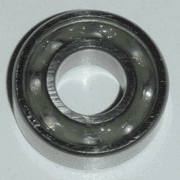

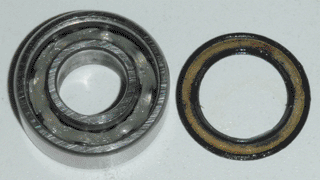
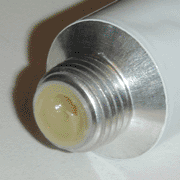
Overall, the performance of this grease exceeded my expectations, and it appears to be an adequate replacement for lithium grease, at least in the applications I currently use it for. It also appears to be highly adaptable; the consistency of the grease can be adjusted by varying the wax content, which can range from between 10 and 30 percent by weight, depending on the application. The type of wax and oil can also be varied depending on availability, and I found that a mixture of beeswax and olive oil behaved similarly, albeit with a much narrower temperature range (10-60°C, versus -20-80°C for the grease described above), as well as reduced pressure resistance (due to the thinner oil). Assuming this grease is as mechanically and chemically stable in the long term as it appears to be in the short term, it will likely become my primary lubricant for situations where oil is inapplicable.
While oil and wax make a very suitable grease for most applications, resins may also be added if a tacky grease is desired. This increases both the adhesion and cohesion of the grease, reducing its tendency to be pushed out of position over time. Going further, if the wax content is subsequently reduced, the result is a kind of tar or pitch, which is useful for lubricating rope (made of either fiber or metal) as it is able to flow between the strands. Finally, resin alone may be used to increase the viscosity of a lubricating oil if desired, though this does not significantly increase its pressure resistance.
Another possible modification is to replace the wax with a solid oil, in the event that wax is either unavailable or too expensive for the task at hand. This has the disadvantage that solid oils have their melting points lowered somewhat by liquid oils, but has the advantage that these oils are also effective lubricants themselves. Hydrogenated oils are particularly suitable for this task, with hydrogenated castor oil (castor wax) being among the best, though historically tallow was commonly used for this purpose.
Finally, a particularly useful shortcut is that heavily thickened greases (which are difficult to mull) may instead be simply cast into blocks or crayons and used in solid form, to be applied by friction. These types of greases are particularly useful for lubricating wooden components, where thinner greases might soak into the grain over time. For this reason, greases will be referred to as either soft (paste) or hard (solid) in future articles, depending on whether the gel structure is broken down by mulling or kept as-is.